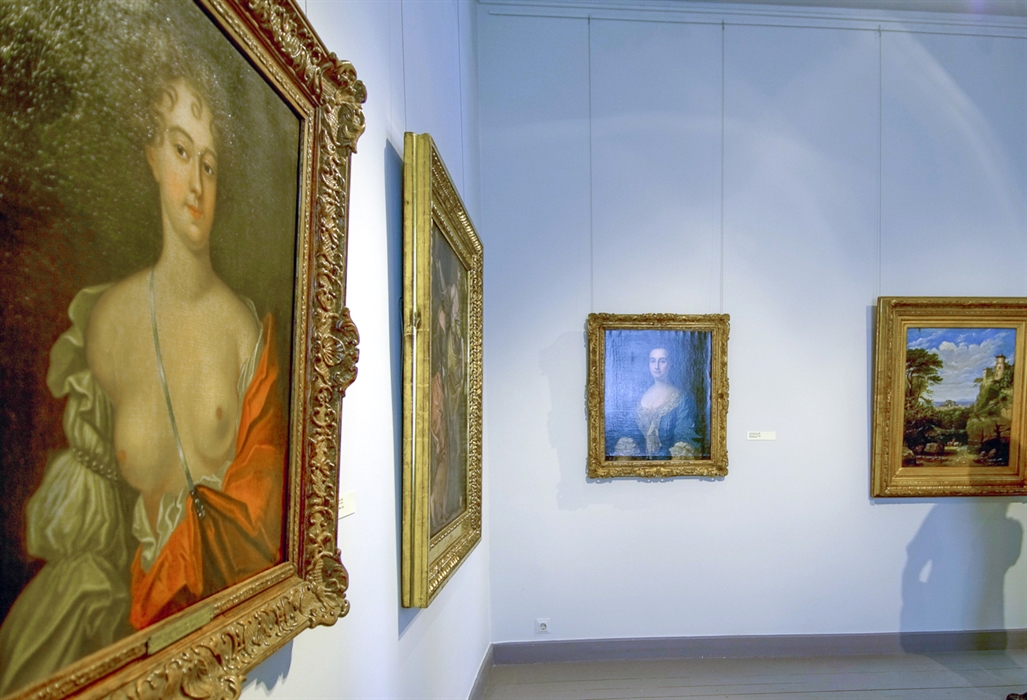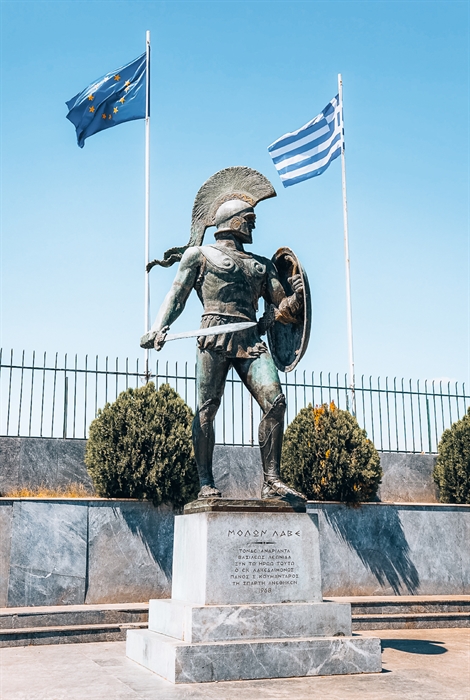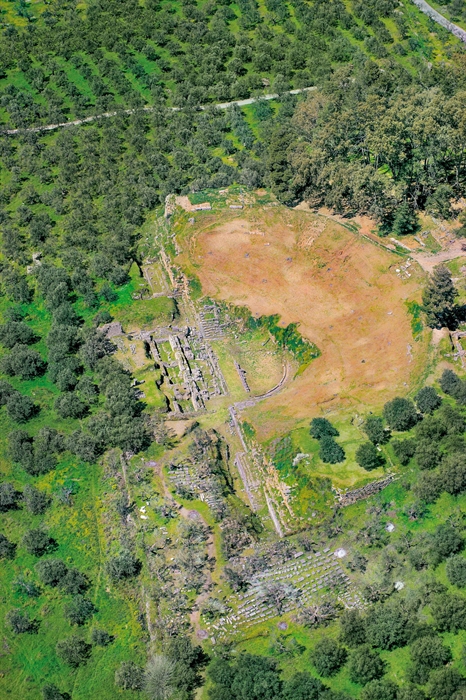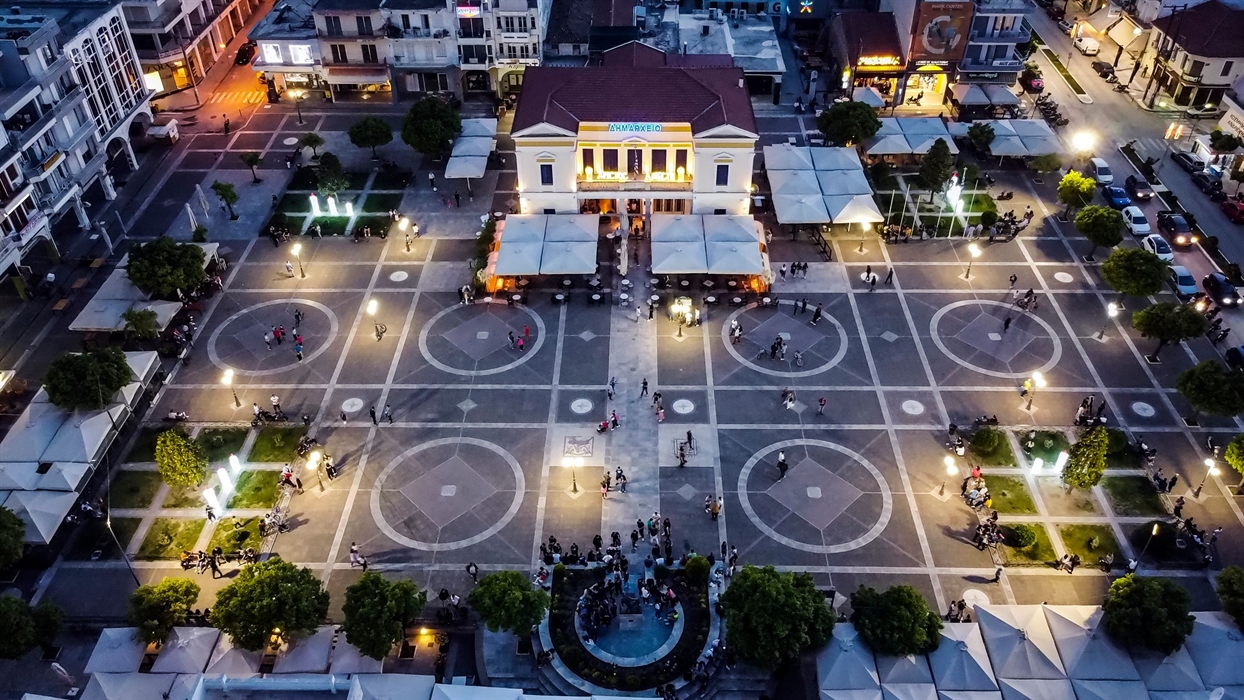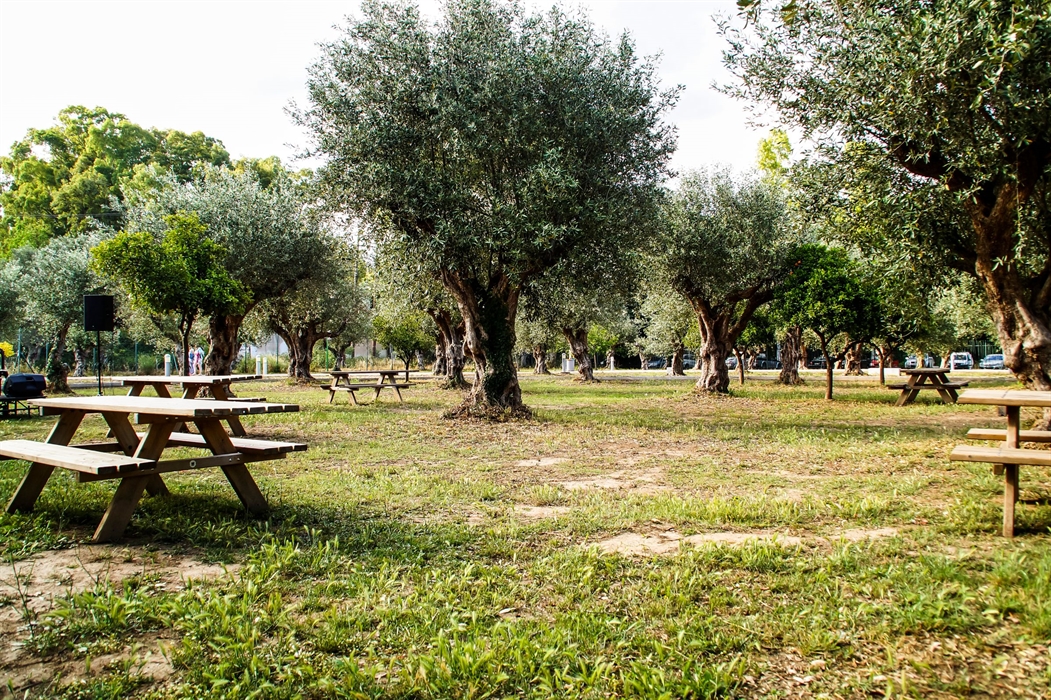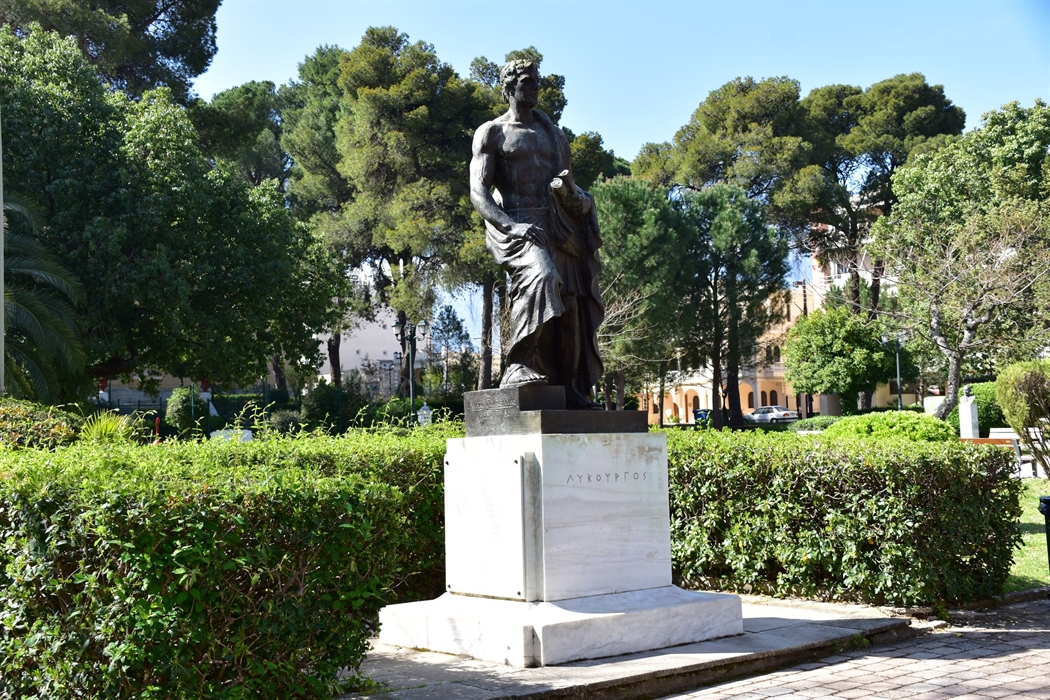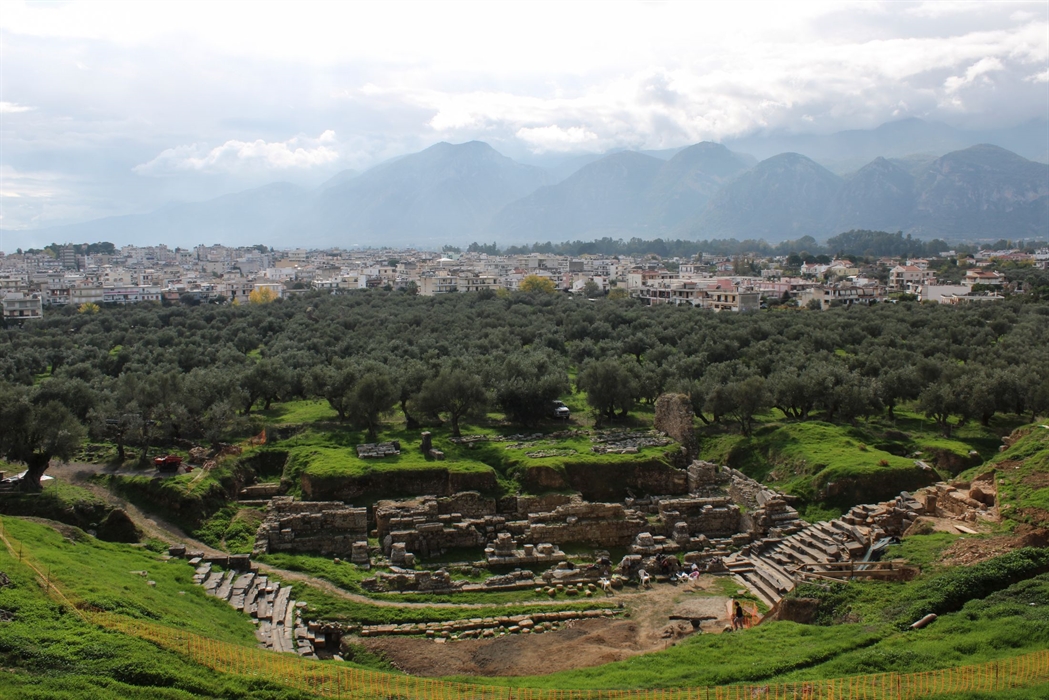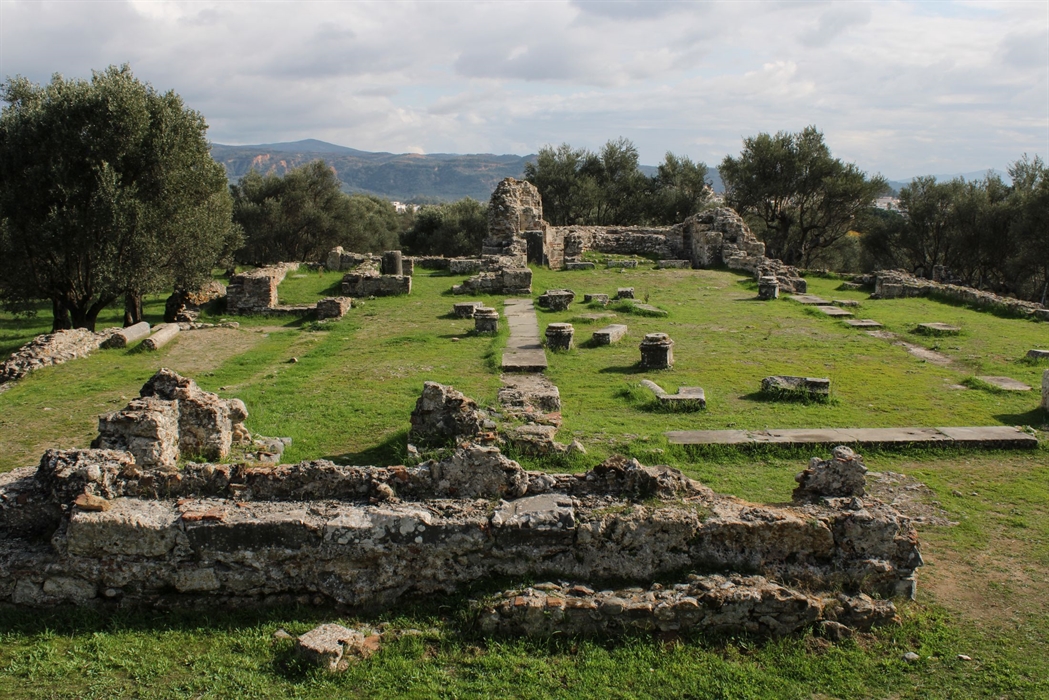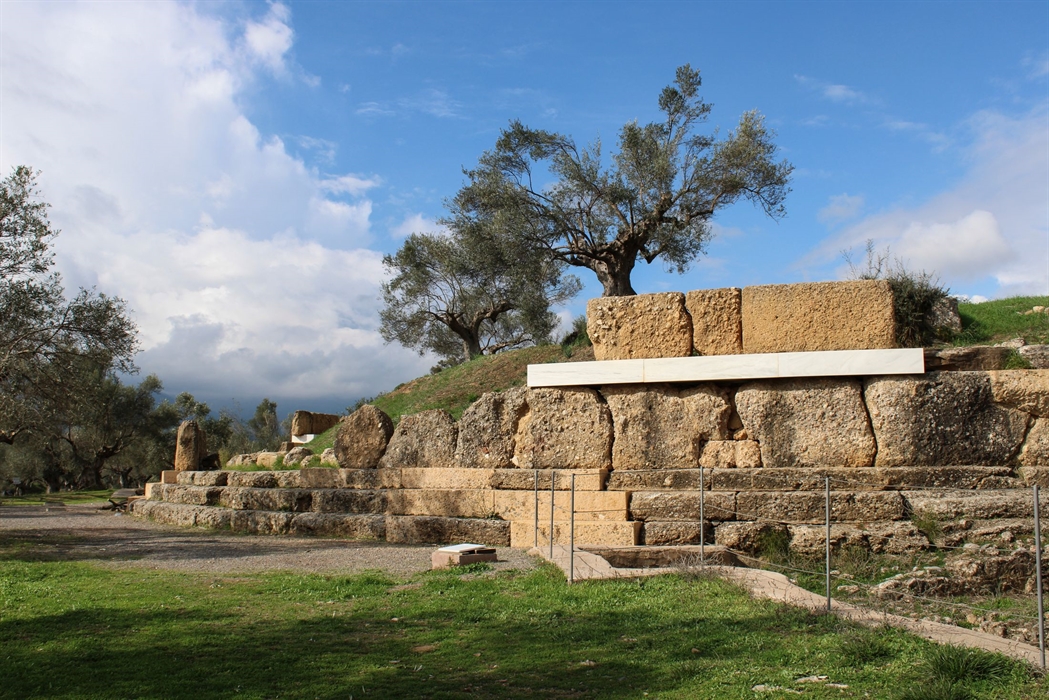The city of Sparta
Sparta has a great history which has made the city famous throughout the whole world. While the Sparta of old is renowned for its fearsome warriors, modern-day Sparta is a welcoming city with a great choice of dining, entertainment and shopping options.It is built on the basis of the urban planning system envisaged by Hippodamus, with large tree-lined streets and squares.There is plenty to do here,as you can visit the ancient acropolis,the theatre, the "Tomb of Leonidas" and the city’s neoclassical buildings, and also go to the city’s important museums and many other attractions. So, in a few words, Sparta is a thriving city at the heart of today’s Laconia, but it would take several volumes to tell the story of Sparta’s magnificent history.
Sparta has a great history, which has made the city famous throughout the whole world. While the Sparta of old is renowned for its warriors, modern-day Sparta is a welcoming city with a great choice of dining, entertainment and shopping options. It is built on the basis of the urban planning system envisaged by Hippodamus, with large tree-lined streets and squares, and is the administrative, business and cultural centre of the regional of Laconia. There is plenty to do here, as you can visit the ancient acropolis, the theatre, the "Tomb of Leonidas" and the city’s neoclassical buildings, and also go to the important museums and many other attractions. So, in a few words, Sparta is a thriving city at the heart of today’s Laconia, but it would take several volumes to tell the story of Sparta’s magnificent history.
Modern Sparta is built on and around the few ruins of the ancient city, in the middle of the plain formed by the Eurotas River between the mountain ranges of Taygetos and Parnon. All the surrounding area is full of olive groves, orange groves and vineyards. Sparta’s history, its proximity to Mystras and other important sites in the region, and the city’s vibrant life and good infrastructure attract a large number of visitors every year.
Ancient Sparta is a city of legends and its name was known throughout the world. It left its mark on Greek and world history, and its society was unlike any other in the ancient world. In contrast to Athens and other cities, Spartan society was defined by discipline, compliance with the laws, virtue, bravery, and a frugal and honest way of life. All Spartan life was a constant preparation for war, and the role played by Spartan mothers was very significant. It was the mother who gave her son his shield before he left for battle, telling him "ή ταν, ή επί τας" (either you will return victorious with it, or dead on it).
HISTORICAL INFORMATION
Sparta was one of the most powerful city-states of ancient Greece, and its impressive military achievements created the legend of its invincible military power. Its heyday began with the conquest of Messina (8th -7th century BC) after prolonged warfare. In the 6th and 5th centuries BC, the Spartans conquered areas of southern Arcadia and extended their rule to the rest of Laconia, managing to limit the power of Argos. From the late 7th century BC until the 4th century BC, Dorian Sparta was the dominant military power in Greece.
Its emergence as a political and military force was the result of institutional reforms attributed to the legendary lawmaker Lycurgus.
The Battle of Thermopylae between the Greeks and Persians in 480 BC, where Leonidas' 300 men perished heroically for their homeland, has been engraved in the consciousness of people all over the world. The phrase "molon labe", spoken by the Spartan king Leonidas to the heralds of the Persian King Xerxes who demanded that the defending Greeks surrender their arms, has been immortalised in world history.
(You can read about the city’s history in more detail on the Municipality of Sparta website.
THE MODERN CITY
Work to build modern Sparta began after a royal decree made by King Otto in 1834. The city was designed by the Bavarian urban planner F. Stauffert, based on the urban planning principles of the Hippodamian system but also following the dominant trends in neoclassicism. The blocks of buildings are symmetrical and converge towards the ancient acropolis which they partially surround.
Earthquakes during late antiquity and Goth raids in the 3rd and 4th century A.D. destroyed most of the ancient city. Its most important public buildings were located on the hill of the acropolis -here the Roman theatre which is considered to have been one of the largest in antiquity stands-and on the Paleokastro plateau. The Agora of ancient Sparta was nearby.
There is a large square with the Town Hall in the centre of the city. It’s a popular meeting place, with restaurants and cafes, and kids play and ride bikes there all day long. The imposing neoclassical town hall was built in 1909 and was designed by the architect G. Katsaros.
K. Palaiologou avenue with its tall palm trees and wide sidewalks is another central point in Sparta, lined with hotels, cafes, restaurants and shops. The pedestrian street of Klembrotou runs perpendicular to it and has similar shops etc and the city's cinema is also here.
At the end of this pedestrian street you can see the church of Agios Nikonos, patron saint of the city, in a park of the same name. There is another pleasant park by the Evangelistria church (1893), where there is also a statue of the famous lawmaker, Lycurgus. Next to it is the Old Court of First Instance, the first public building in the city which was constructed in 1837 and is a classic example of the architectural styles which were in favour during the rule of King Otto.
At the end of Palaiologou you will probably find people taking photos of the statue of Leonidas which reminds everyone of Sparta’s glorious history. The "Tomb of Leonidas", one of the most famous monuments in the city, is nearby. It is also known as "Leonideon", and was excavated in 1892. It takes the form of a temple and probably dates back to the 5th century BC -or later.
Most of the buildings in Sparta that were built before 1930 are neoclassical. A good example of this style is the building that houses the Koumantareios Library, where works by European painters from the 16th to the 19th century are exhibited (K. Palaiologou 123). Other notable neoclassical buildings are the Agricultural Bank building, the Fykioris and Linardakis mansions on K. Palaiologou and the Liunis mansion on Evangelistrias Street.
On the road to Mystras you will find another park, Goude, which is ideal for sports and recreation. It has bike paths, playgrounds, skateboard runs, an amphitheatre, an outdoor gym, etc.
MUSEUMS IN SPARTA
The Archaeological Museum is housed in a building from 1874 and was the first provincial museum in Greece designed specifically as a museum. It has exhibits with finds from various areas in Laconia dating from the Neolithic era to the late Roman era. The exhibits from the great sanctuaries of Sparta take pride of place, but there are also works of sculpture from the Archaic times to Roman times. (Lykourgou and Agiou Nikonos).
The Museum of the Olive and Greek Olive Oil has interactive and very well presented displays which show the history of the olive and olive oil production in Greece and analyse the importance of olive oil in nutrition, art and religion. The museum is housed in the renovated Electricity Company building.
If you want to find out about the city’s recent past, head for the Museum of Modern Sparta which is housed in a two-story neoclassical building. The exhibition has information on the Friendly Society, the Revolution of 21 and the families of Mystras and also houses exhibits on the most important phases in the urban, social and cultural development of Sparta. (82 Lykourgou avenue).
The Manousakeio museum of urban and folk life. This museum has a modern approach which invites you to go on a journey through early 20th century Sparta by looking at household goods, clothing and photographic material from the time. There are recreations of interiors, and multimedia exhibitions and screenings are also organised here. The museum is housed in a two-story house which was donated by Leonidas Manousakis. (Ananiou 13).
See information about more ancient monuments of Sparta and the famous Menelaion.
The House of Mosaics
This is an unusual architectural site, with a history which began in Roman imperial times and which continues to this day. It houses two mosaics, one depicting the abduction of Europa and the other showing Orpheus playing his lyre. These mosaics were once the floors of luxurious Roman villas. The first mosaic dates from the second half of the 3rd century AD and the second from the beginning of the 4th century AD. They were discovered by chance in 1872 and 1890. The Europa mosaic was probably the floor of two rooms in a house to the east, while the Orpheus mosaic was probably in the bath (balaneum) area of another mansion.
The two covers which are now the new “Home” of the ancient mosaics were constructed at the end of the 19th century, and were vital for the protection of the mosaics. The museum was redesigned as part of a grant from The Stavros Niarchos Fund in 2020.
In total, there are 170 mosaic floors in 128 different locations in Sparta, dating from Hellenistic times (3rd, 2th century BC) to Pre-Byzantine times.
Dioskouro and Palaiologou. Tel. 27310 25363, www.houseofmosaics.gr.
Opening hours: Wednesday - Monday 9:00-14:00, Closed Tuesday.
The Acropolis of Ancient Sparta and other monuments
The Acropolis of Ancient Sparta is behind the Municipal Stadium. The site includes notable monuments such as the Roman theatre which was one of the largest in ancient Greece. It is also near to the "Tomb of Leonidas" and other monuments.
The archaeological site at the Acropolis of Ancient Sparta is behind the Municipal Stadium. The site includes notable monuments.
ROMAN THEATRE
The theatre is made from white local marble and is the most impressive monument in the site. With an area of 14 acres and a total width of 114 m, it was one of the largest theatres of antiquity and could seat 16,000 spectators. It was built in the late Hellenistic years and thanks to an inscription found near the scene, we know that the Roman emperor Vespasian financed the theatre. After the barbarian raids of the 4th century A.D., it stopped functioning as a theatre and gradually most of the area was built up with houses. You can still see the orchestra pit and retaining walls with inscriptions from the lords of the city in Roman times. A special feature of the theatre was its movable wooden stage which was mounted on wheels so it could be dragged into place.
SANCTUARY OF ATHENA CHALKIOIKOS
According to the 2nd century traveller, Pausanias, it was Tyndareus, king of Sparta and guardian of Helen of Troy, who arranged for the Temple to be built.
It is at the highest point of the acropolis hill and excavations have only revealed the southern part of the enclosure, above the theatre pit which was built later. The name comes from the embossed copper (chalkós) plates used as interior decoration.
THE CIRCULAR BUILDING
This is in the lower southeast section of the archaeological site, in the area where the agora was thought to be. The building as we see it today may be the result of repairs made to an ancient building during Roman times.
THE EARLY CHRISTIAN BASILICA
The remains of a large basilica-type church can also be seen at the site. The foundations and some stone structures from the sanctuary, including the base of the alter, are clearly visible. The church was built in the 7th century AD. and was probably the metropolitan church of Byzantine Lacedaemonia.
The Menelaion
To the east of Profiti Ilia hill, after the village of Afysso, you will find one of the most important temples in Sparta - the Menelaion . It was founded near an important Mycenaean site, and in ancient times the area was called Therapni. It is a large building in the shape of a pyramid, and it is here that the cult of Menelaus, mythical king of Sparta and husband of Helen of Troy, began in the 8th century BC. The cult continued until Hellenistic times. The first temple is thought to date from the 7th century BC, but it was altered in the 5th century BC to make it a temple worthy of the mythical heroes of Sparta. As well as visiting the remains of the temple, you can also enjoy great views over the Eurotas valley and Mount Taygetos.
Other monuments
The "Tomb of Leonidas" is near the Acropolis of Ancient Sparta. There are also two other noteworthy monuments to the east: a cruciform church considered to date from the 10th century which was built on Roman remains, and the post-Roman balineum (bathhouse). The bathhouse dates from the 3rd-4th century and has hot and cold baths, and a mosaic floor.
On the eastern edge of the city, near the banks of the Eurotas River, is the Sanctuary of Artemis Orthia which dates from the 9th century BC. It was a religious centre where the young people of Sparta were educated and the Mycenaean deity Orthia, who in historical times was identified with Artemis, was worshiped here.
Five kilometres south of the city, on Agia Kyriaki Amyklon hill, is the Sanctuary of Amyklaios Apollo. It was the most important place of worship for the ancient Spartans and retained its glory during the Roman occupation. You can see parts of the retaining walls surrounding the precinct and a partially restored circular altar. In its heyday, the sanctuary was home to the famous "Throne of Apollo", a huge work by Bathycles, in the centre of which was a statue of the god.
Location
Find the destination on the interactive map below.
Categories
Weather
Σχετικό περιεχόμενο χρηστών (UGC)
Ενημερωθείτε για ενδιαφέροντα θέματα γύρω από τον προορισμό μέσα από το περιεχόμενο των χρηστών μας
Discover 7 hidden gems of the Peloponnese
Many of you may have already visited some of the most renowned attractions…
TOP 10 archaeological museums in the Peloponnese
Olympia, Mycenae, Epidaurus, Diros Cave, Ancient Corinth, Messene and…
TOP 10 Castles in the Peloponnese
Castles galore! Mystras, Monemvasia, Palamidi, Methoni, Koroni,…
Newsletters
- About us
- FAQ's
- Map
- Tourism information centers
- Disclaimer
- Sitemap
- Our brand
- Media roum
- Adding your bussiness
- Corporate
- MICE

Peloponnese. Greece beyond the obvious





Design and creation from Cosmote
Marinas and Moorings
Diving centers
Get inspired
- Media gallery
- Blog
- The Peloponnese in the media
- Your feedback
- Users' general content
- Users' local products
- Users' events content
- Ask a local
More
- Accommodation
- Travel agencies
- Restaurants
- Services
- Destinations Map
- Weather
- Public transport
- Events
- Frequently asked questions
- Useful phones
- B2B
- Destination Data
- Contact

